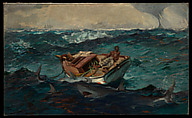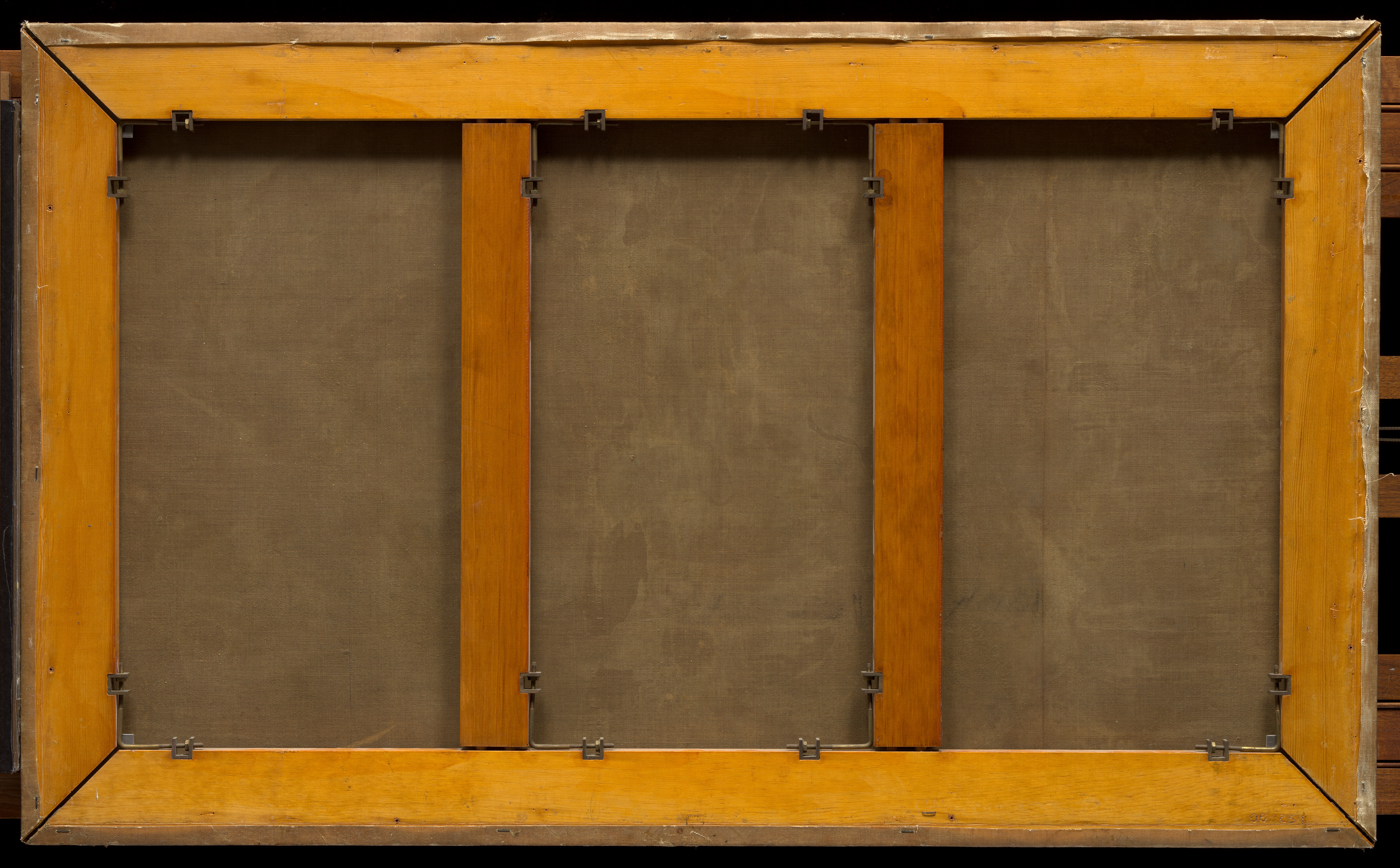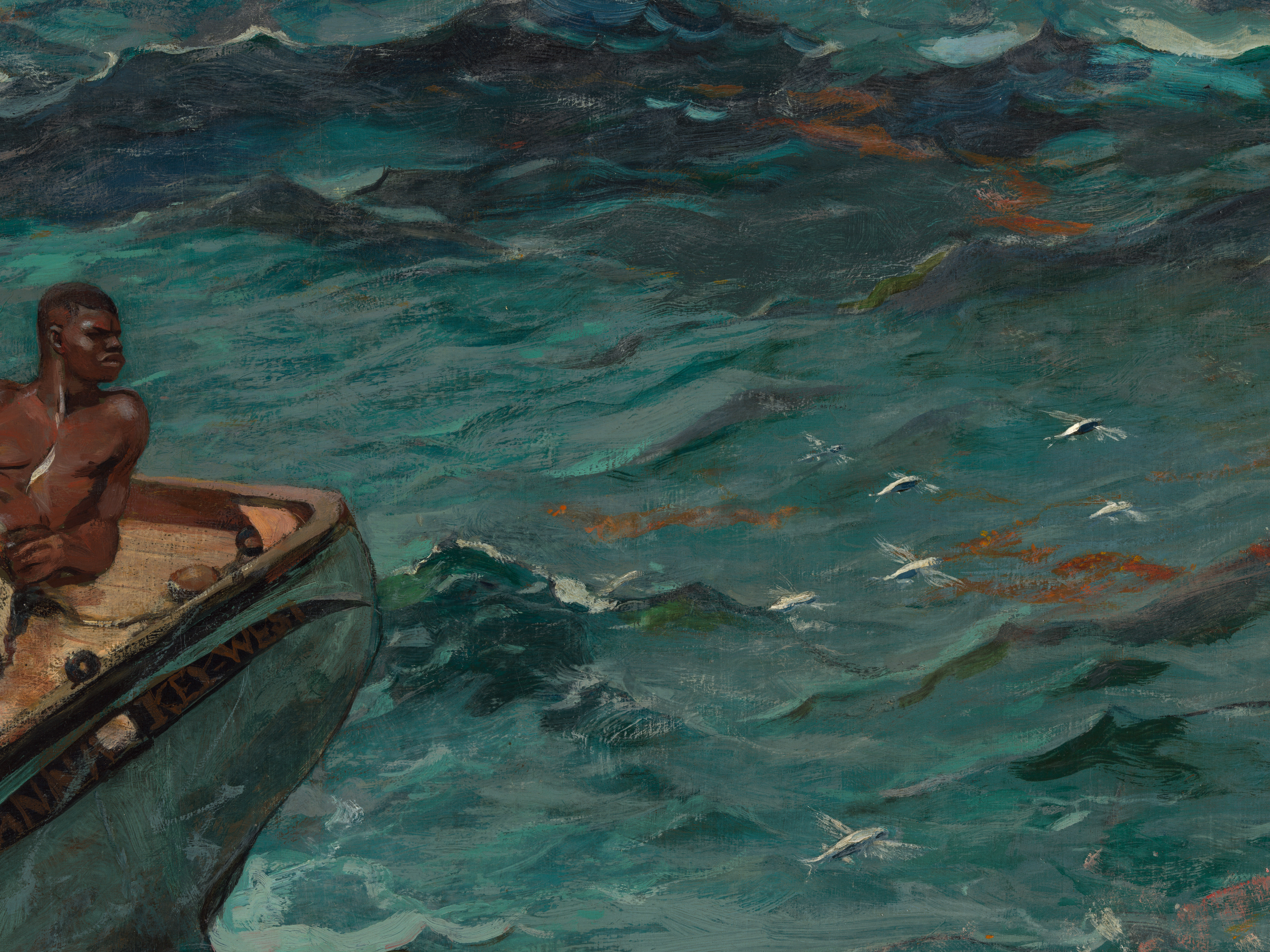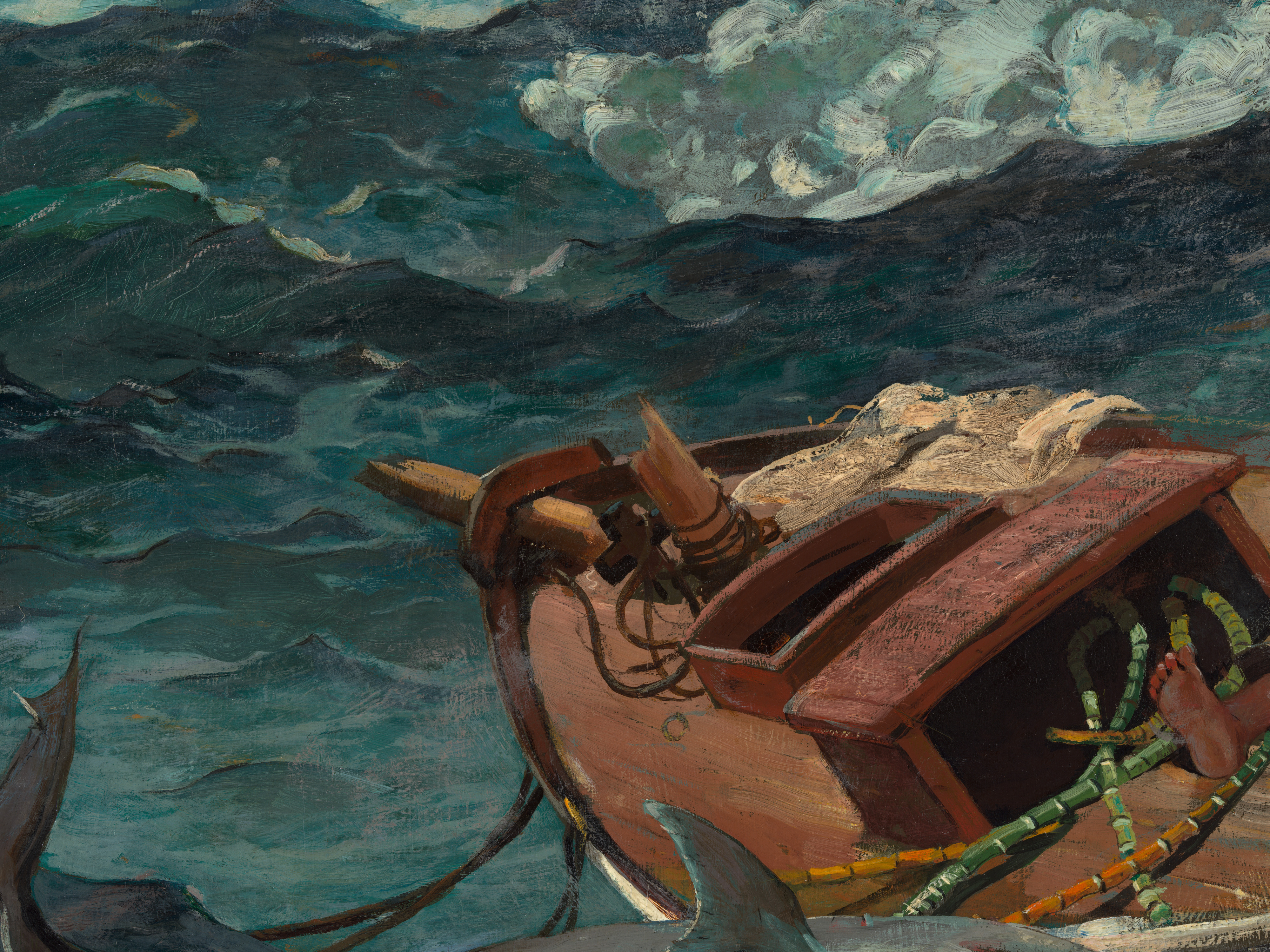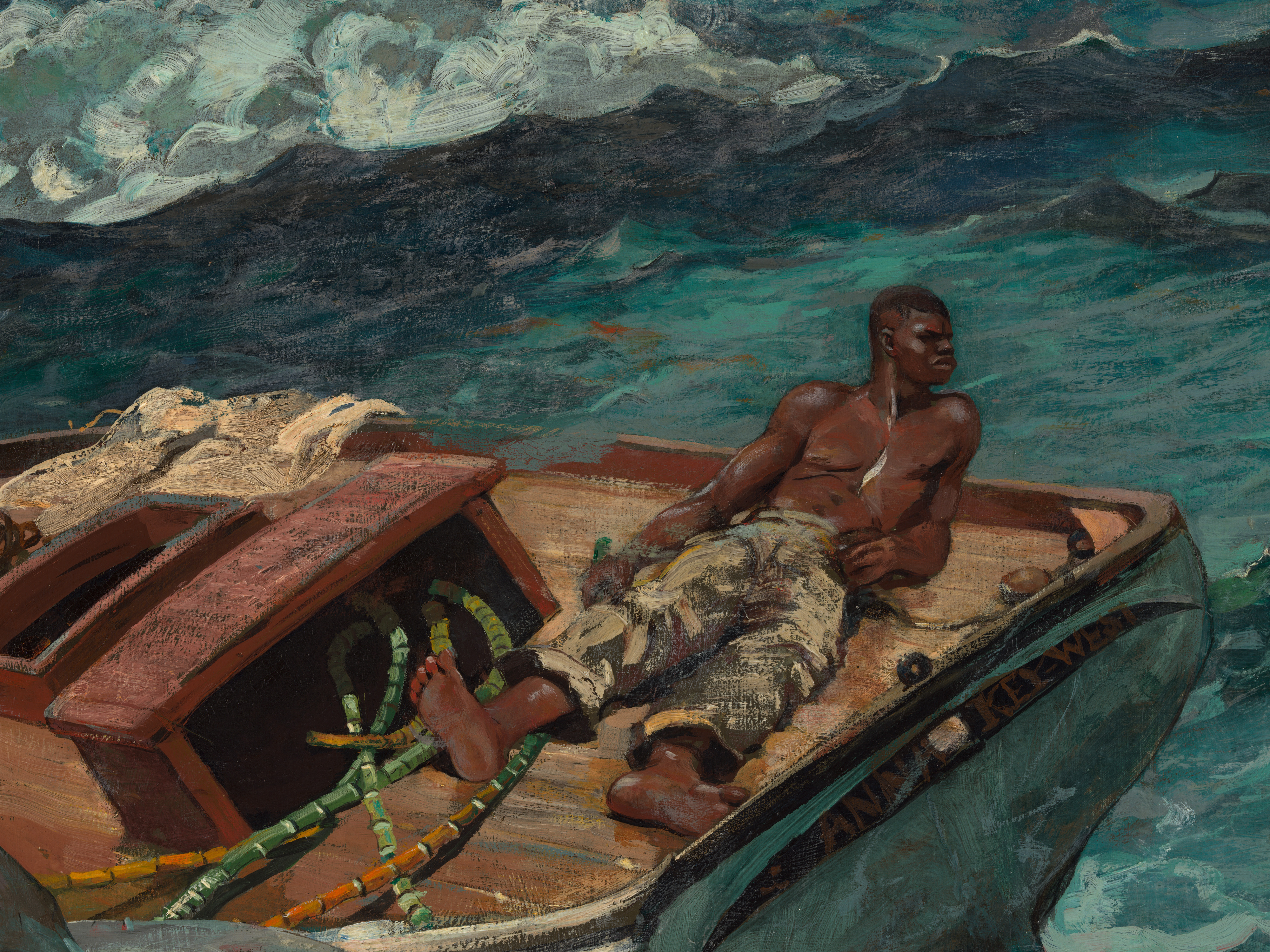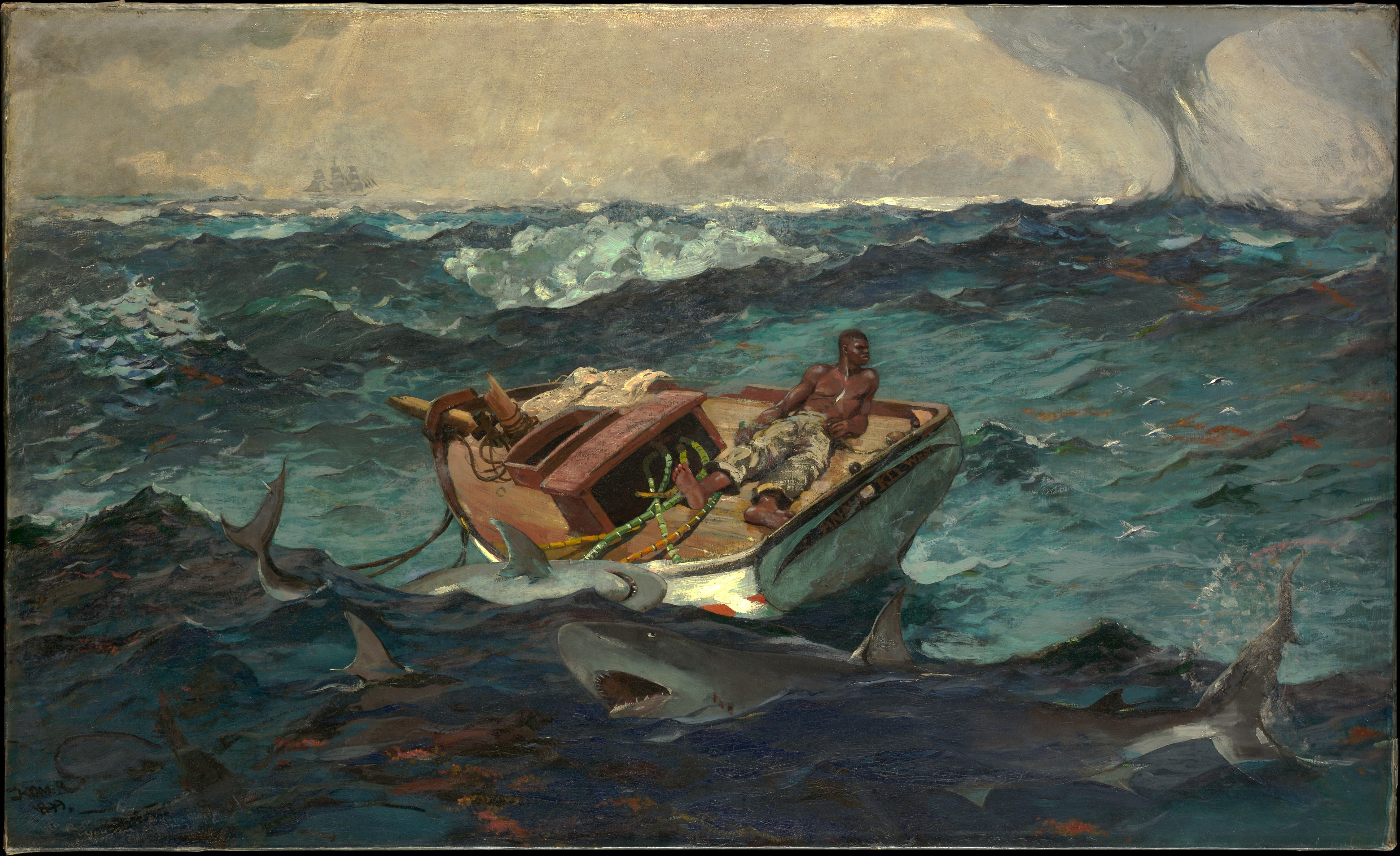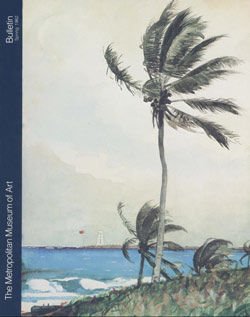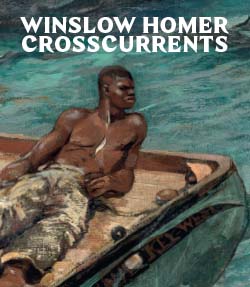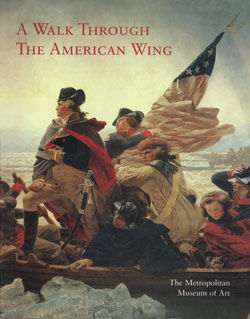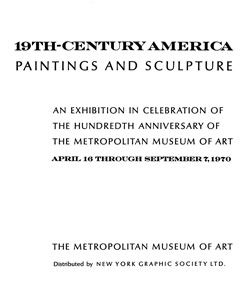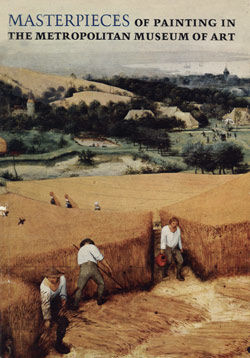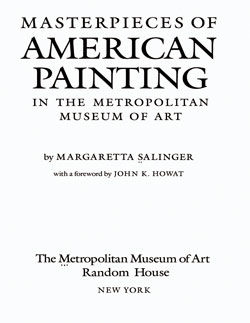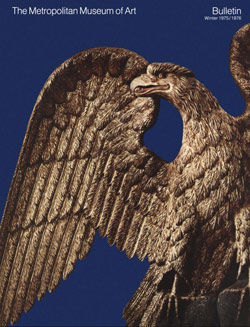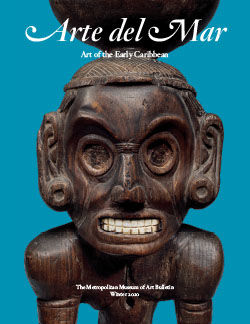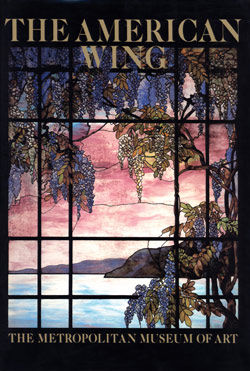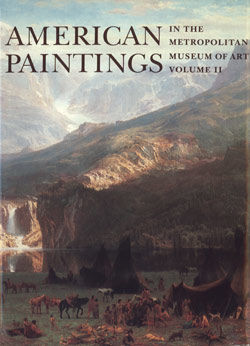The Gulf Stream
Winslow Homer American
In Homer’s epic saga set along the Gulf Stream, a Black man faces his possible demise on the deck of a distressed boat while threatened by sharks and a waterspout. This painting is the culminating expression of various deeply personal and universal themes that Homer explored across his career, particularly the conflict between humans and the natural environment. Completed at the dawn of the twentieth century and during what historians have called the nadir of race relations in the United States, The Gulf Stream is also rich with geopolitical implications. Homer acknowledged the expanded imperial ambitions of the United States beyond North America with the addition of key elements. Splayed across the ship’s deck are stalks of sugarcane—the Caribbean commodity central to the economy of empire and directly linked to the swift ocean current of the title, which enabled its trade, and the devastating history of transatlantic slavery. Homer interweaves these complicated narratives in a painting that confronts human struggle, personified by a stoic survivor, against the relentless power of nature.
#4382. The Gulf Stream
Due to rights restrictions, this image cannot be enlarged, viewed at full screen, or downloaded.
This artwork is meant to be viewed from right to left. Scroll left to view more.
